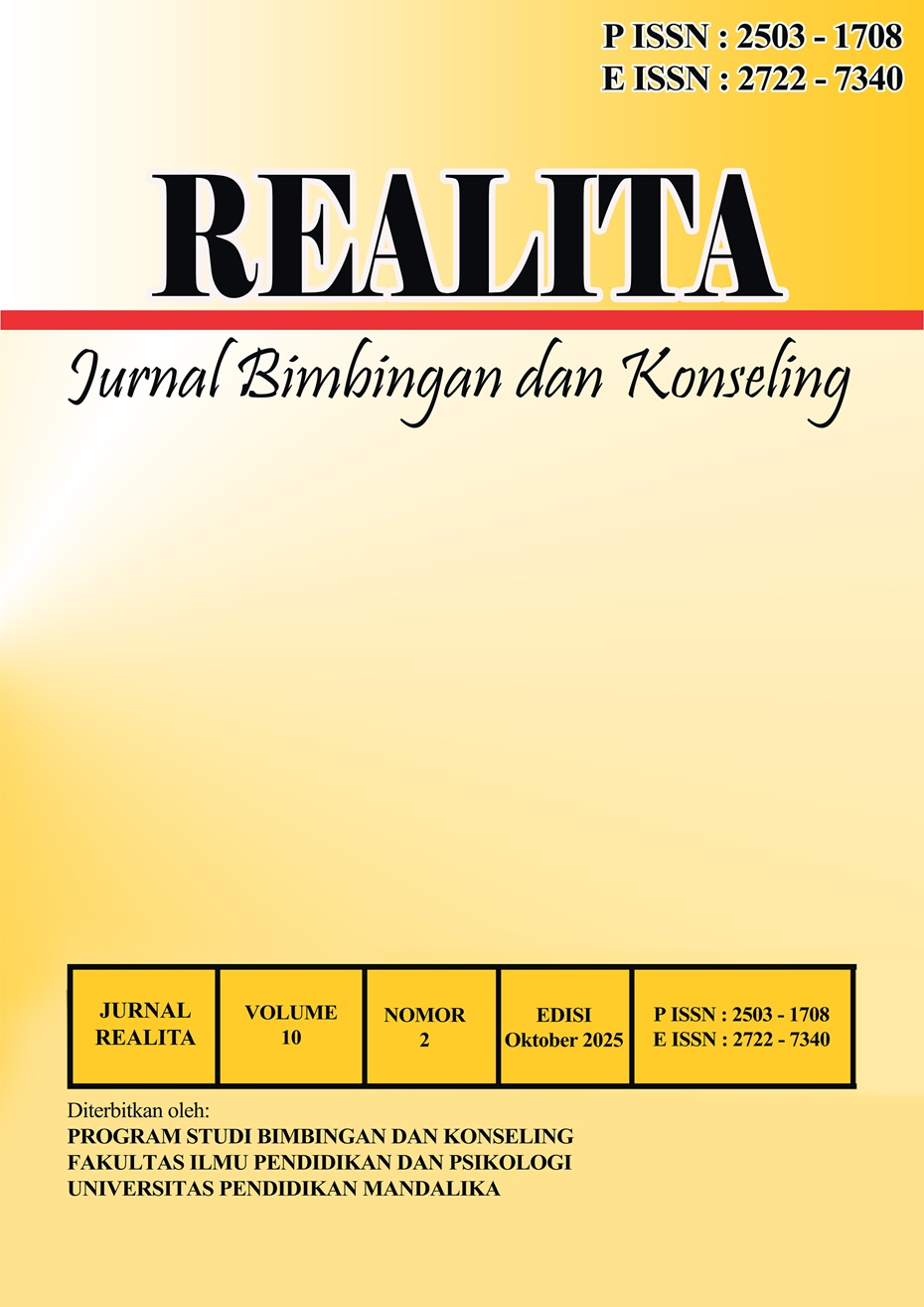EVALUASI PROGRAM BIMBINGAN KONSELING DENGAN MENGGUNAKAN MODEL EVALUASI DISCREPANCY DI SMP KRISTEN 2 EBEN HAEZER SALATIGA
DOI:
https://doi.org/10.33394/realita.v10i2.16813Keywords:
Program evaluation, guidance and counseling, discrepancy model, data triangulationAbstract
The purpose of this research is to evaluate the guidance and counseling (BK) program at SMP Kristen 2 Eben Haezer Salatiga. This research uses the discrepancy evaluation model, which has 5 steps. The research was conducted using data and source triangulation. The principal, guidance counselor, and students are the subjects of the research. Observation, documentation, and thorough interviews were used to collect data. The research results show that there is a difference between the ideal standards of the BK program and its implementation in the field. This is especially true for service planning, activity implementation, and program evaluation. This study found that the BK program at SMP Kristen 2 Eben Haezer Salatiga needs to be improved in terms of planning, implementation, and evaluation to be more efficient and meet the needs of the students.
References
Miles, M. B., & Huberman, A. M. (1994). Qualitative Data Analysis: An Expanded Sourcebook. California: Sage Publications.
Prayitno. (2009). Bimbingan dan Konseling Teoritis dan Praktis. Jakarta: Rineka Cipta.
Provus, M. M. (1971). Discrepancy Evaluation: Purpose, Design, and Procedure. Berkeley: McCutchan Publishing Corporation.
Putra, G. N. (2020). Evaluasi Pelaksanaan Program Bimbingan dan Konseling di Sekolah Menengah Pertama. Jurnal Konseling dan Pendidikan, 8(1), 45-52.
Rahman, A. (2018). Evaluasi Program Bimbingan dan Konseling: Pendekatan Model Discrepancy. Jurnal Bimbingan Konseling, 7(2), 112-118.
Stufflebeam, D. L., & Shinkfield, A. J. (2007). Evaluation Theory, Models, and Applications. San Francisco: Jossey
Sugiyono. (2017). Metode Penelitian Kualitatif, Kuantitatif, dan R&D. Bandung: Alfabeta.














